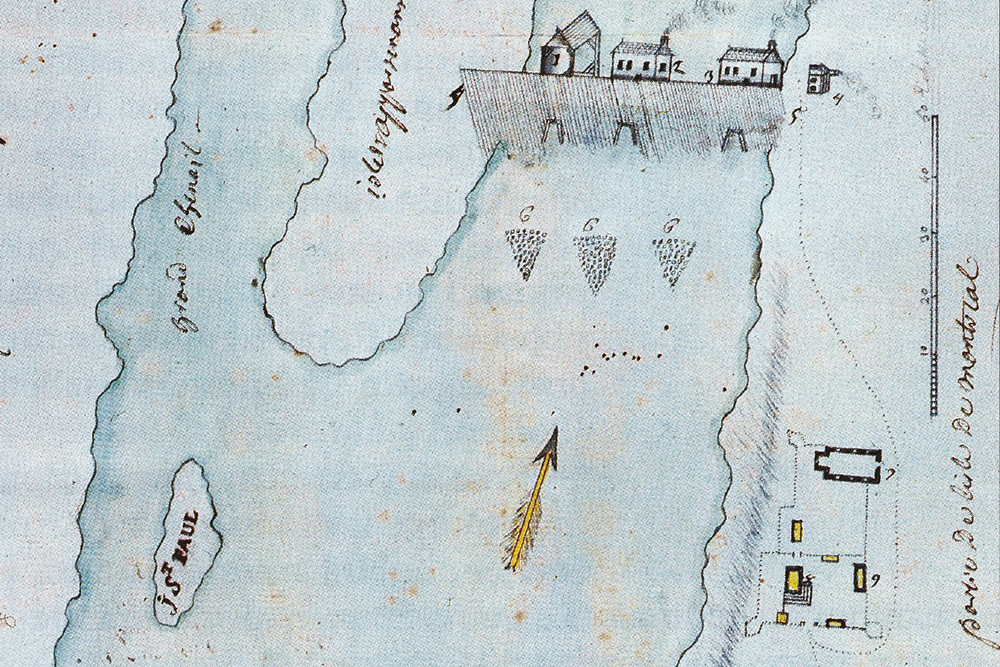A daunting challenge: building a 100-meter-long dike
On the way to the mills, it is customary to raise one’s hat to greet the people you meet. “People here are generally in very good health,” Pehr Kalm noticed. Anyone can just walk up to a farmer’s home and talk to its inhabitants, men or women. Every farmer owns a flock of sheep and harvests the wool to make clothing.
The region is very stony, but its inhabitants put the excess rocks to good use, making them into low stone walls to demarcate each field. Kalm, accompanied by Mr. Sicard, arrives on the riverbank. Here, there is an abundance of a grey limestone rock: “The shores are entirely made up of it.” These large plate-like rocks are made up of several superimposed layers.
The dike straddles the river, connecting the shores of both islands. Mr. Sicard used the rocky outcrop in the channel to lay the foundations for the structure. This site is ideal to harness the full strength of the current: a small stream with a waterfall a few feet high, so that the water will not freeze during winter and the wheel can keep on spinning.
A new channel is dug into the middle of the dike for a second flour mill. This channel powers the two water wheels fitted on its side. Harnessing the river to build a dike is an expensive affair, but watermills are more reliable than their wind-powered counterparts, which are overly subject to the whims of the weather. The miller explains: “No one can build a mill for themselves on the Island of Montreal; that is a right reserved to the clergy. I keep one third of what I mill, and the clergy gets one fourteenth.”

An anonymous and undated map of the centre of the Sault-au-Récollet parish, from Fort Lorette to the mills dike between 1726 and 1749.
Stéphane Tessier tells us about the miller Simon Sicard.
Video with transcript (EN). Subtitles available in English and French.

